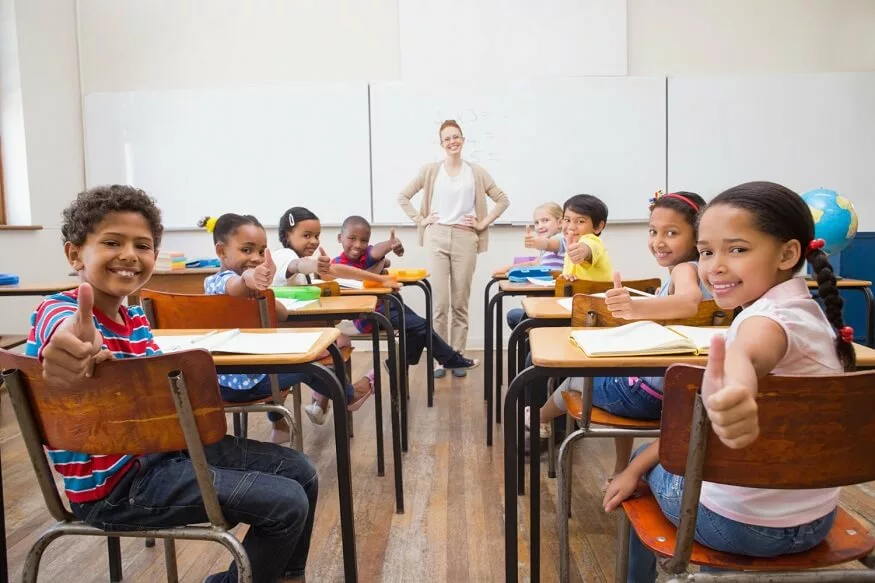A positive classroom environment not only enhances the teaching and learning experience but also lays the foundation for a thriving educational community. In this article, we will explore 10 effective tips for building and sustaining a positive classroom culture, incorporating essential classroom management techniques to establish an atmosphere conducive to growth and learning.
What is Classroom Culture
Classroom culture is the heartbeat of a learning space, the invisible magic that shapes how students and teachers connect. It’s not about desks and chalkboards; it’s the intangible spirit that fills the room. Imagine it as the unique personality of a classroom, created by the blend of teacher-student interactions, shared experiences, and unspoken norms.
In a positive classroom culture, you can feel the warmth of encouragement and collaboration. Students freely exchange ideas, support one another, and there’s a palpable eagerness to learn. It’s an environment where trust between teacher and students is the glue, and challenges are seen as opportunities for growth.
Conversely, in a less positive culture, there might be a subtle tension, hesitancy to participate, and a lack of that vibrant energy. Teachers and students both play starring roles in crafting this culture – it’s about how they communicate, navigate challenges, and create an atmosphere where everyone feels valued.
Classroom culture is the soul of education, an amalgamation of attitudes, values, and shared norms that transform a physical space into a vibrant community of learners. It’s about fostering a place where curiosity thrives, relationships flourish, and the journey of learning becomes a collective adventure.
Also Read: The Benefits of Cooperative Learning in the Classroom
How To Build A Positive Classroom Culture
Here are 10 ways on building a positive classroom culture:
- Set Clear Expectations
- Promote Positive Teacher-Student Relationships
- Implement Effective Classroom Management Techniques
- Encourage Open Communication
- Celebrate Diversity and Inclusivity
- Promote a Growth Mindset
- Create a Positive Physical Environment
- Incorporate Mindfulness Practices
- Foster a Sense of Purpose and Autonomy
One of the fundamental aspects of creating a positive classroom culture is setting clear expectations. Clearly communicate to your students the standards of behaviour, academic performance, and classroom procedures. This clarity provides a sense of structure and predictability, contributing to a positive learning environment. Ensure that these expectations are realistic, achievable, and consistently reinforced to foster a sense of responsibility among students.
Establish a Supportive Community
Building a positive classroom culture involves cultivating a sense of community among students. Encourage teamwork, collaboration, and mutual support. By incorporating group activities and fostering a sense of belonging, students are more likely to engage positively with their peers, reducing instances of conflict and enhancing the overall classroom experience. Implementing icebreaker activities at the beginning of the school year can be an effective way to break down barriers and create a supportive atmosphere.
A positive classroom culture hinges on the quality of teacher-student relationships. Establishing a connection with students creates an environment where they feel valued and understood. Take the time to get to know your students individually, showing genuine interest in their lives. A positive teacher-student relationship not only enhances the learning experience but also sets a positive example for respectful and empathetic behaviour.
Effective classroom management is a cornerstone of a positive classroom culture. Techniques such as consistent and fair discipline, strategic seating arrangements, and well-defined routines contribute to a well-organised and controlled environment. By addressing behavioural issues promptly and consistently, educators can create a space where students feel secure and can focus on their academic pursuits.
Establishing open lines of communication is vital for fostering a positive classroom environment. Encourage students to express their thoughts, concerns, and questions freely. Create a safe space where students feel comfortable sharing their ideas without fear of judgement. Additionally, maintain transparent communication with parents, keeping them informed about their child’s progress, achievements, and any challenges they may be facing.
Also Read: 10 Tips for Proper Classroom Etiquette
A positive classroom culture thrives on diversity and inclusivity. Celebrate and embrace the unique backgrounds, perspectives, and talents that each student brings to the table. Integrate diverse learning materials that reflect various cultures and experiences. By doing so, educators create an environment where every student feels valued and respected, fostering a positive atmosphere for learning and personal growth.
Instilling a growth mindset in students is instrumental in building a positive classroom culture. Encourage a belief in the potential for improvement through effort and perseverance. Acknowledge and celebrate the process of learning, emphasising that mistakes are an inherent part of the journey towards mastery. A growth mindset fosters resilience, motivation, and a positive attitude towards challenges.
The physical setting of a classroom plays a significant role in shaping the overall atmosphere. Ensure that the classroom is well-organised, visually appealing, and conducive to learning. Consider the use of colours, lighting, and decorations that promote a positive and welcoming environment. A tidy and aesthetically pleasing classroom can have a profound impact on students’ mood, behaviour, and engagement.
Integrating mindfulness practices into the daily routine can contribute to a positive classroom culture. Short mindfulness exercises, such as deep breathing or brief moments of reflection, can help students manage stress, improve focus, and create a more serene learning environment. Mindfulness techniques not only benefit students but also support educators in maintaining a calm and composed demeanour.
Finally, a positive classroom culture is nurtured when students feel a sense of purpose and autonomy in their learning journey. Clearly communicate the relevance of the material being taught and connect it to real-world applications. Provide opportunities for students to take ownership of their learning through projects, choices, and goal-setting. Empowering students with a sense of purpose and autonomy enhances motivation and enthusiasm for the learning process.
Also Read: Best Assessment for Learning Strategies and How to Make Them Work in Your Classroom
Creating a positive classroom vibe is like crafting a masterpiece—it takes dedication, consistency, and a thoughtful approach. At EuroSchool, we believe in laying the groundwork for this enriching environment by setting clear expectations. We don’t stop there; we’re all about fostering a supportive community where positive relationships between students and teachers flourish. Our secret sauce? Effective classroom management techniques that keep things organised and running smoothly. Communication is key, so we encourage open dialogue, ensuring everyone’s voice is heard.










